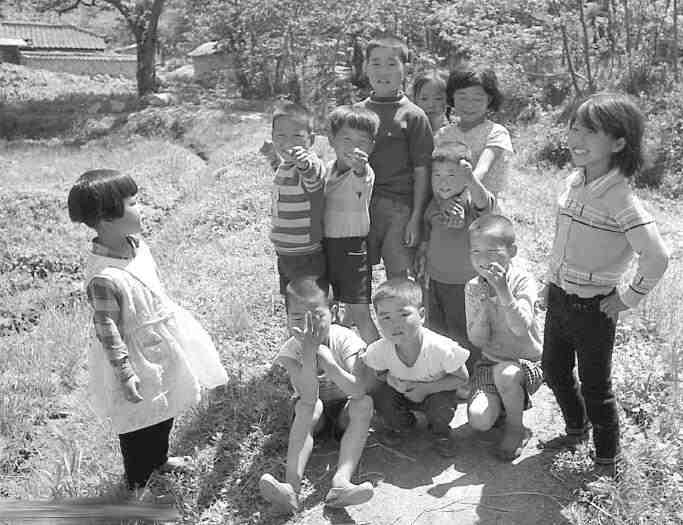
Figure 1.--Here we see a group of South Korean children in the country during 1969. Notice that they are all wearing Western-styled clothing. During the 1950s traditional clothing was still very common in the countryside.


Figure 1.--Here we see a group of South Korean children in the country during 1969. Notice that they are all wearing Western-styled clothing. During the 1950s traditional clothing was still very common in the countryside. |
Korean children mostly wore traditional clothing in the first half of the 20th century. Some boys wore Western garments in the cities, but traditional clothing was more common. We do not yet have detailed information on the various traditional garments involved. This did not begin to change until after World War II and the Korean War. The change may have occurred faster in the North as it was more industrialized with a larger urban population. Substantial change took place in the South during the 1960s. By the 1970s, Koreans boys were mostly wearing Western clothes. The garments we have noted were essentially the same as worn in Japan. We see country children by the 1970s wearing the same Western clothing styles as worn in the cities. Girls wore both pants and dresses. Boys wore T-shirts and shorts in the summer. Track suits seem popular in colder weather. Younger children commonly wore colorful tights. We note that Korean catalogs still offer tights for younger children, both boys snd girls. Sneakers were very popula and continue to be so.
Korean children mostly wore traditional clothing in the first half of the 20th century. Some boys wore Western garments in the cities, but traditional clothing was more common. We do not yet have detailed information on the various traditional garments involved. This did not begin to change until after World War II and the Korean War. The change may have occurred faster in the North as it was more industrialized with a larger urban population. Substantial change took place in the South during the 1960s.
Koreans boys by the 1970s, were mostly wearing Western clothes. The garments we have noted were essentially the same as worn in Japan. We see country children by the 1970s wearing the same Western clothing styles as worn in the cities. Girls wore both pants and dresses. Boys wore T-shirts and shorts in the summer. Track suits seem popular in colder weather. Younger children commonly wore colorful tights. Tights replaced long stockings, we believe in the 1960s. We note that Korean catalogs still offer tights for younger children, both boys snd girls. Sneakers were very popula and continue to be so.
Many Korean children wore school uniforms. We note that at some schools with uniforms, the schools did not always insist on uniform hosiery. A reader writes, " I noted the hosiery the children are wearing at a Korean school. One of the girls is wearing striped knee socks, which I don't think we have
seen before as part of a school uniform. The boys seem to be wearing white tights with shorts, but notice that, in at least one case, the white tights are patterned. I don't believe we have seen patterened tights in Korea or Japan before. Is this an innovation?" We have noted in both Korea and Japan that younger children wore a variety of tights and socks done in both stripes as well as with designs, often catoon characters on them.
Navigate the Boys' Historical Clothing Web Site:
[Introduction]
[Activities]
[Biographies]
[Chronology]
[Clothing styles]
[Countries]
[Topics]
[Bibliographies]
[Contributions]
[FAQs]
[Glossaries]
[Satellite sites]
[Tools]
[Boys' Clothing Home]
Navigate the Boys' Historical Clothing Web Site:
[Return to the Mian Korean page]
[Return to the Main country page]
[Australia]
[Canada]
[England]
[France]
[Germany]
[Ireland]
[Italy]
[New Zealand]
[Scotland]
[United States]
